Shibuya Crossing might be one of the most iconic images of Tokyo. From the onset, one might think it’s just a simple intersection, but upon waiting for the red light, things become all the more apparent. Traffic stops from all directions, turning the street into a pedestrian, all-way crossing. Suddenly, a surge of people starts flowing from each direction, like a fish swimming up and downstream. They call this the “Shibuya Scramble.” Shoppers, students, couples, tourists and commuters all rush in all directions.
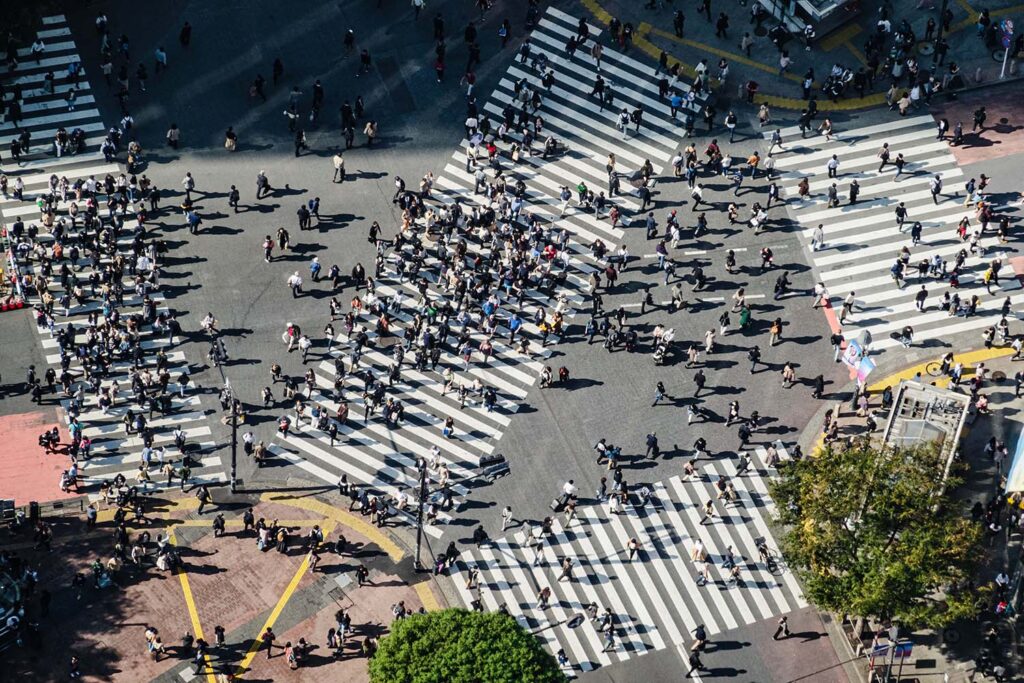
The crossing is rumoured to be the busiest intersection in the world. Hundreds sometimes thousands of people come to this crossing to make their way across the city. Tokyo is the most populous city in the world and this scene makes that enormity come to life in front of you. But there is so much more to Shibuya than just the crossing. So come with us now on a guide of all the best things to see and do while you’re visiting Shibuya, the busiest crossing in the world!

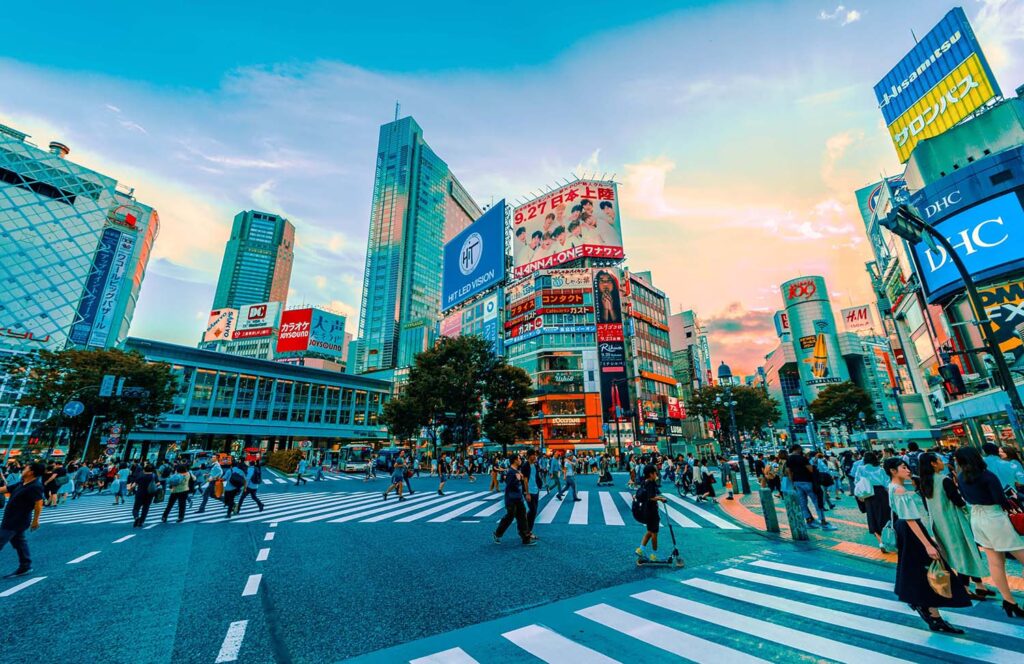
History
Shibuya Crossing has been a busy intersection for over 100 years. With Shibuya Station’s construction in 1885, an influx of people began to commute into the city via this station. Back then, there was only a train line that ran into the station, but now Shibuya station serves more than eight different metro lines. In 2019, the Shibuya Scramble Square, a mixed-use skyscraper, was completed. Becoming the tallest building in Shibuya and was named after the famous scramble.
Access
Shibuya crossing is very easy to find. Just head over to Shibuya station and walk out via the Hachiko exit.
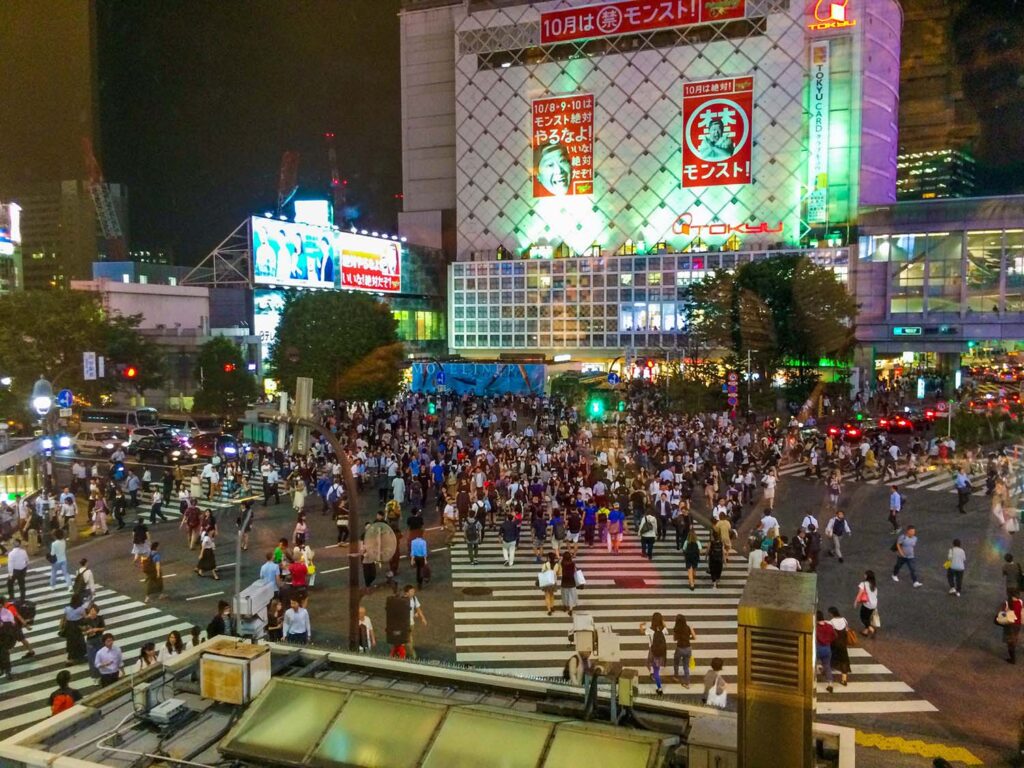
Shibuya Crossing in Film
The crossing has become an essential location in pop culture. It has been featured in movies like “Lost in Translation,” “The Fast and the Furious: Tokyo Drift,” and “Resident Evil: Afterlife and Retribution.”
Facing the crossing are three giant television screens. These flash all day long and these screens are some of the highest-priced billboards in Tokyo. Due to the fact that simply so many people come through here daily to lay their eyes on the screens. If you’re interested in seeing what is popular in the world of advertising in Japan, this is a great place to come.
Where to Observe the Shibuya Crossing
Starbucks Shibuya
One of the best free views of Shibuya Crossing is at the Starbucks Shibuya Tsutaya right on the corner. This location had an elevated level with floor-to-ceiling windows and a viewing counter to sit at. This is people-watching at its best. In recent years the secret has got out, and you sometimes have to queue for over 2 hours to get a seat at the window. But luckily, you’re still in a Starbucks, so grab a fancy drink to enjoy while you wait. Even if you don’t buy a drink, you can still come up here and enjoy the view.
Shibuya Mark City Crossing
Located between JR Shibuya Station and the complex building named Shibuya Mark City is a long, glass-covered crosswalk. This crosswalk is situated slightly above street level but provides an almost entirely unobstructed view of the crossing. Avoid coming here for photos during rush hour since the passageway is used for pedestrians getting on and off the underground. But during off-peak hours this crosswalk is pretty peaceful and a great place to plant yourself.
L’Occitane Cafe
If you’re looking for a location more above street level to get a better look at the crossing, then head over to L’Occitane Cafe. While it might seem weird to dine inside a cosmetic shop, this elegant store has a beautiful cafe on the second floor. Here you can drink tea and cocktails flavoured with the same herbs and fruit they use in their products. The restaurant is located along a large window facing out onto the crossing. From here, you can watch the scramble from the comfort of this adorable cafe.
Magnet Park
To get a bird’s eye view of the crossing, you’ll need to head over to Magnet Park. Magnet Park is located on the top floor of the Magnet by Shibuya 109 building. This location does require an admission fee. It costs 300 yen to access the roof and is open from 11:00 am to 11:00 pm. Although it’s not free, 300 yen is pretty minimal, and the view of not just the scramble but also the entirety of Tokyo itself is stunning! Well worth the 300 yen.

TIP: Don’t visit at rush hour
Many people think the only time to really get the best photos of this crossing is during rush hour. But this time of day only means you’ll be crushed by the crowds of people who cross here. For commuters, this isn’t a show but a legitimate means of getting to and from work. Try to avoid getting in their way. No matter what time of day you come here it’s always busy so you’ll always get a great picture.
For me, one of the best times of day to come to the crossing is at night. When the sun set, the glowing neon lights surrounding the square create such a more powerful image. People are dressed up for a night on the town, and music blares from nearby Izakayas. The atmosphere is unmatched.
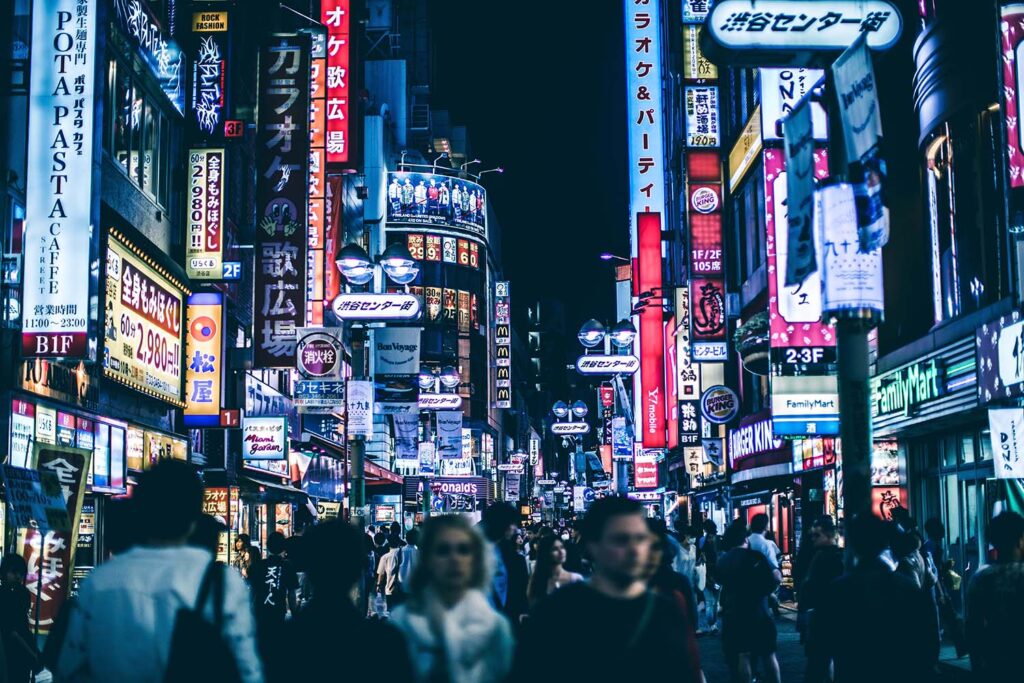
So you’re here, now what? I’ve seen some people schedule an hour at Shibuya Crossing and truthfully that’s just not necessary. Seeing the crossing is so fun and iconic but there is plenty more to do around Shibuya.
Below is my guide on what to do around Shibuya Crossing once you’ve gotten that perfect picture!
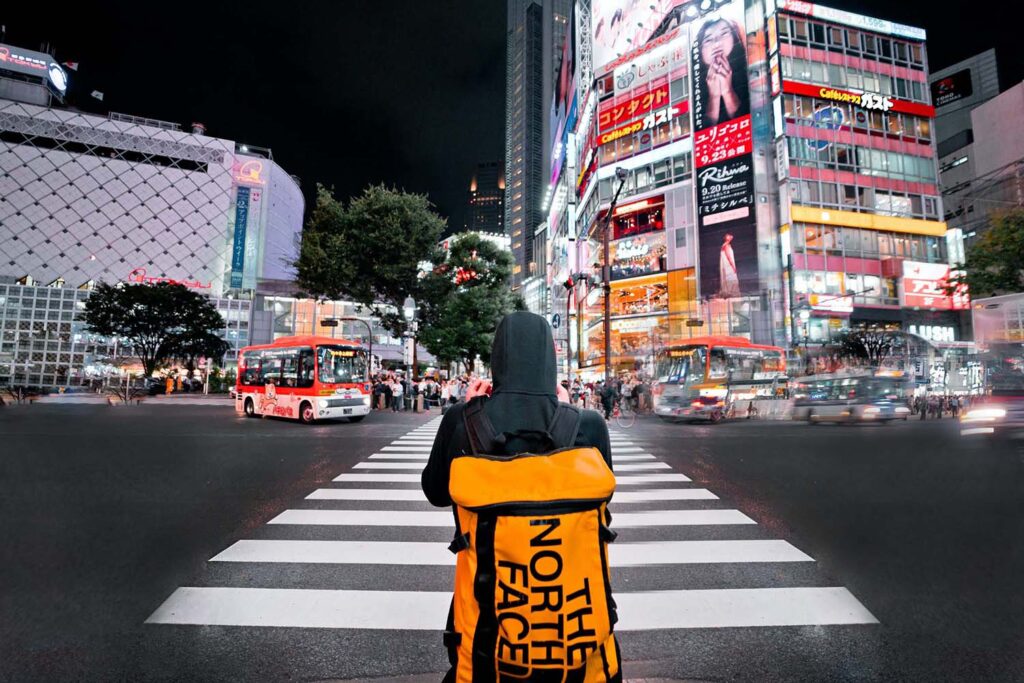
Hachiko Statue and Mural
An adorable statue of a dog sits right outside Shibuya Station. This statue is dedicated to a real-life dog named Hachiko. Hachiko would come and sit outside the station every day, waiting for his owner when they would return from work. Even after his master passed away Hachiko would come and wait. Akita dogs (native to Japan) are known for their steadfast love and dedication but none more so than Hachiko. The statue has gained a considerable cult following over the years. Today, tourists line up to get a picture with the famed copper dog.
But in my opinion, the brightly coloured mural, also dedicated to Akika dogs is much more exciting. This is located just opposite the statue. The entire piece is more from large tiles and ceramics and features these dogs playing across the tile rainbow. This wall makes for a fantastic photo backdrop. While the Hachiko statue is iconic, the crowds make it less than comfortable while this mural is much more of a hidden gem.
Shibuya 109
Shibuya 109 is the central fixture above the scramble. It is a large multi-level department store whose lights glow brightly, inviting you in. Shibuya 109 is often referred to as the “center of youth“. It is thought to be the epicentre of trendy fashion. When it was built in 1979, the mall aimed to target career women. It was originally designed to appeal to middle-aged women who knew that their fashion sense was and wasn’t just looking for the next big trend. Over the years the clientele got younger and younger. Shibuya 109 became one of the best places to highlight new Japanese brands and designers.
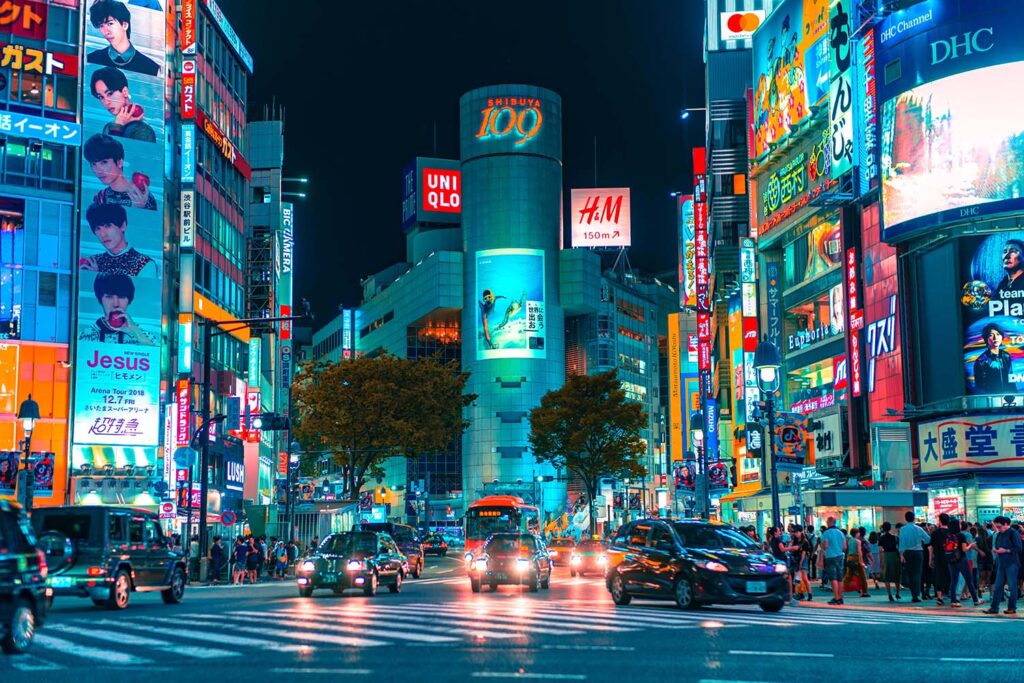
But warned, Shibuya 109 is not for the faint-hearted. The music is blaring from the minute you walk in the doors. The lights and lack of windows make it impossible to tell what the time is. This is a trick used in casinos in Vegas. The employees shout “irrashaimase” (meaning welcome) at any passers-by and enthusiastically beckon you to come inside.
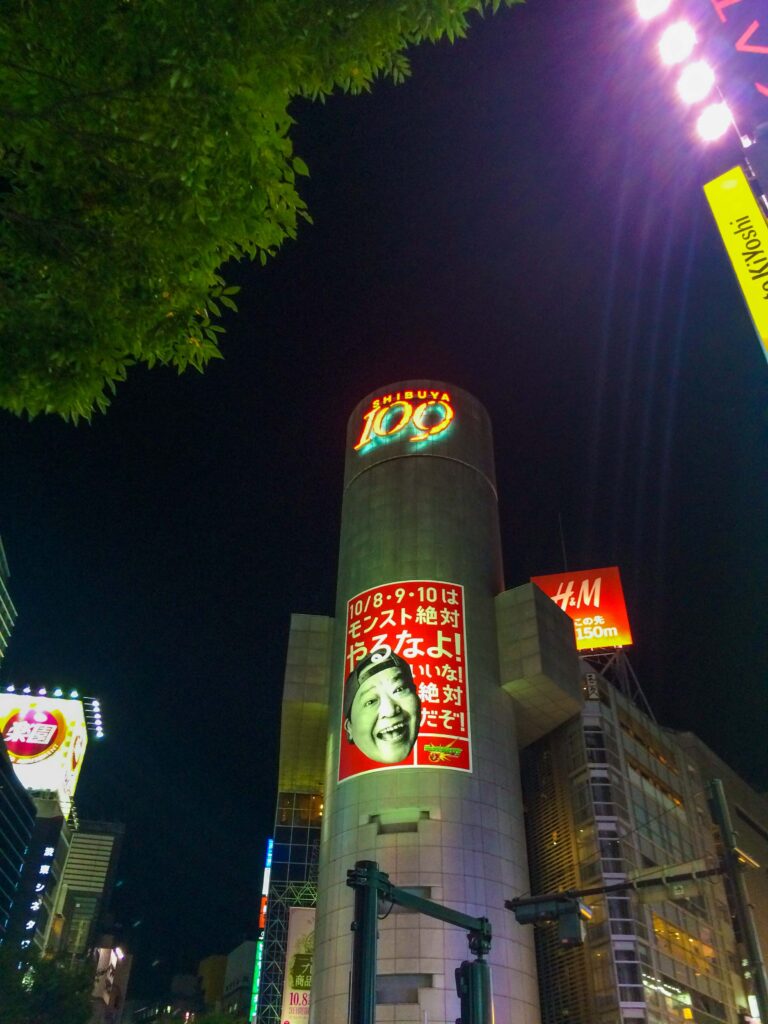
Unlike department stores in North America which are just one big store selling different brands, Shibuya 109 is more like a mall with hundreds of different individual stores. Since this is such prime real estate, only successful brands survive. So you know these the best of the best of Tokyo designers. The owners of the mall make a point to bring in young entrepreneurs and upstart companies. Small brands, which go on to become famous worldwide, often got their start in this very place.
Punyus
Unless you have a similar body size to most Japanese women, you might find it hard to find clothes in your size. If you’re thin and petite, you’ll be in heaven. But for those of us who are tall or curvy, there are not many options. Luckily there is PUNYUS! Punyus is one of the coolest Japanese brands. Their clothes are bright and cheery and they are super inclusive sizing as the brand was started by a plus-size designer. Each item costs around 5,000 yen ($50 US) but they are such unique pieces that you’ll really feel like you’ve bought a piece of Japanese fashion. Something that you could never get at home!
Shibuya Gyoza
Genki Sushi is a name you’ll often hear when looking for food in Shibuya. But I found it to be a little samey and slightly disappointing. The line is usually really long, and I think it’s over-hyped. Instead, walk down the street a little bit to find Shibuya Gyoza. This restaurant specializes in that crispy, thin-skinned gyoza that is super addictive. Six pieces will only cost you 290 yen, so it’s easy to keep ordering more and more.
Can*do
While the Daiso across the street gets much more attention, Can*do is one of my favourite 100 yen shops. Daiso is HUGE. Although I love it, you really need a substantial amount of time to do it justice. Whereas Can*do on the other hand is much smaller and therefore only has the very best stuff! I found that pretty much anything on your list of things to bring home from Japan you’ll find here! Great for souvenirs as well as everyday items and some cool inventions you’ll only find in Japan!
Tokyu Hands
Tokyu Hands is another vast department store, but it features handicrafts, stationary, houseware and more. When I went to Shibuya 109, my husband was very bored since it caters almost exclusively to women. But here at Tokyo Hands, there is something for everyone! Plus, this place is great to see those weird and wonderful Japanese gadgets to bring home and entertain your friends.
Basement Food Hall
Before leaving Tokyu Hands, be sure you make a trip to the basement. Down here you’ll find the entire floor is dedicated to a variety of food stalls. This is one of the largest food halls in the city. You can find everything from tonkatsu, sushi, grilled chicken, tofu products, pickles, deli salads, and all kinds of bento boxes. There is also international cuisine like Indian curries, Vietnamese pho, Chinese dumplings and dozens of Chinese-style main dishes. Honestly, anything you’re craving, you’ll find down here! And at prices so low you can afford to try a few different items!
Center Gai
Center Gai is one of the most popular areas for young people to come at night to party. There are dozens of clubs and restaurants to keep people entertained at all hours of the day. To me, Center Gai is most iconic for those tall, neon signages that hang off the sides of buildings. These are essentially advertisements for all the exciting things found along the street. The streets are always bustling with lively people. Even if you’re not a drinker or partier, the atmosphere along this street is something everyone should experience.
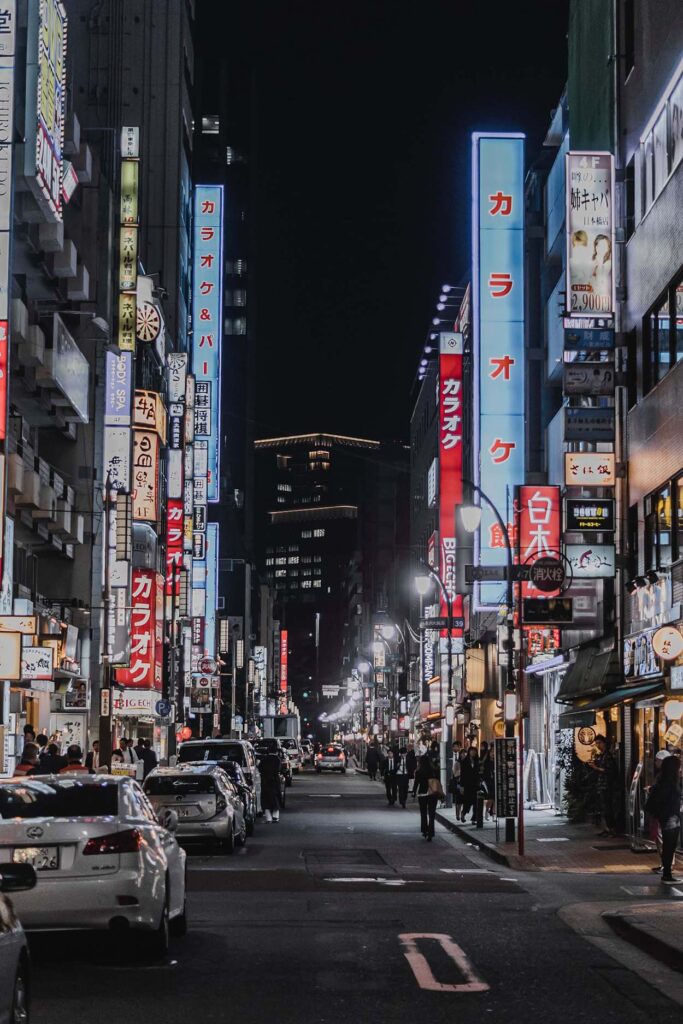
Nonbei Yokocho
Nonbei Yokocho or “Drunkard’s Alley” is located a short 10 minute walk away from the Shibuya crossing. While Golden Gai in Shinjuku has suffered from the over-popularization of its cute miniatures bars, this little alley has the same charm without the swell of people. Although let’s see how long that lasts. Chairs spill out onto the street, and the bars almost seem to be built one on top of the other. Each of them is decorated with brightly coloured signs and paper lanterns to attract in clientele.
Koen Dori
Up from Shibuya Gyoza, you’ll find Koen Dori. Koen Dori means “park street.” The reason for the street’s name is the large, lush trees planted on either side of the road, making the densely urban area seem a little more luxurious. The street is lined with upscale department stores and expensive fashion boutiques.
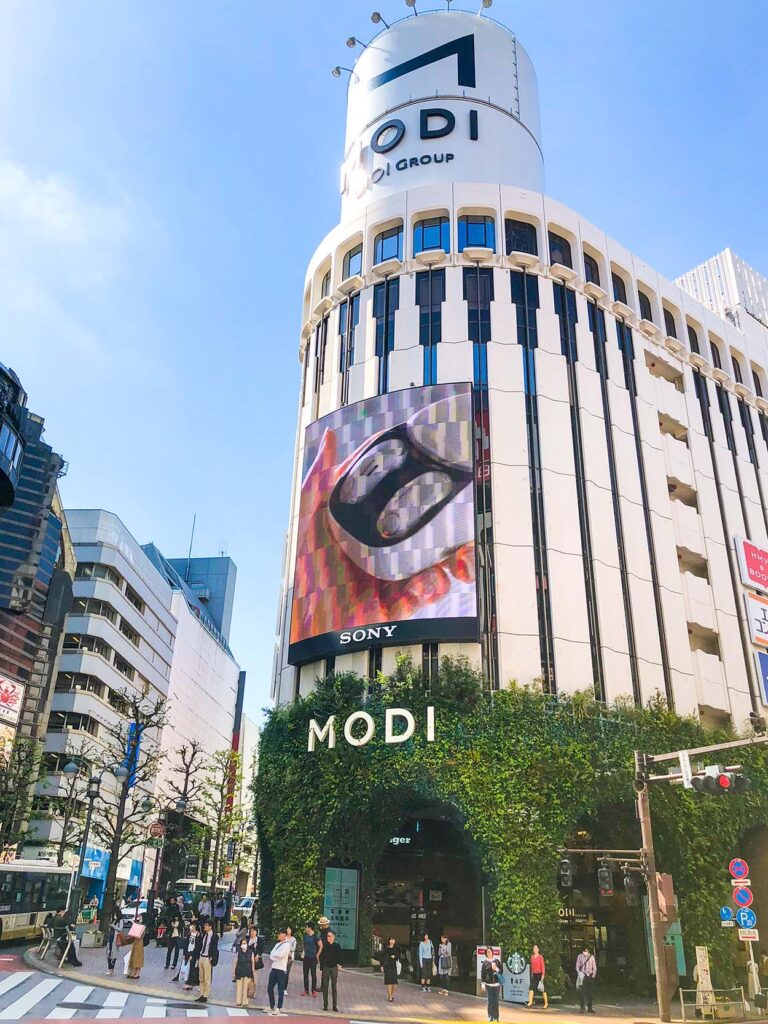
Rainbow Karaoke
To finish your tour of Shibuya, head over to my very favourite karaoke place: Rainbow Karaoke. Walking into this place, you might be thinking, “oh wow, this place looks so fancy. I bet it will be super expensive…” But we found that it is really only slightly more expensive than karaoke locations. And none of these are even half as lovely as Rainbow Karaoke and didn’t have the number of amenities offered.
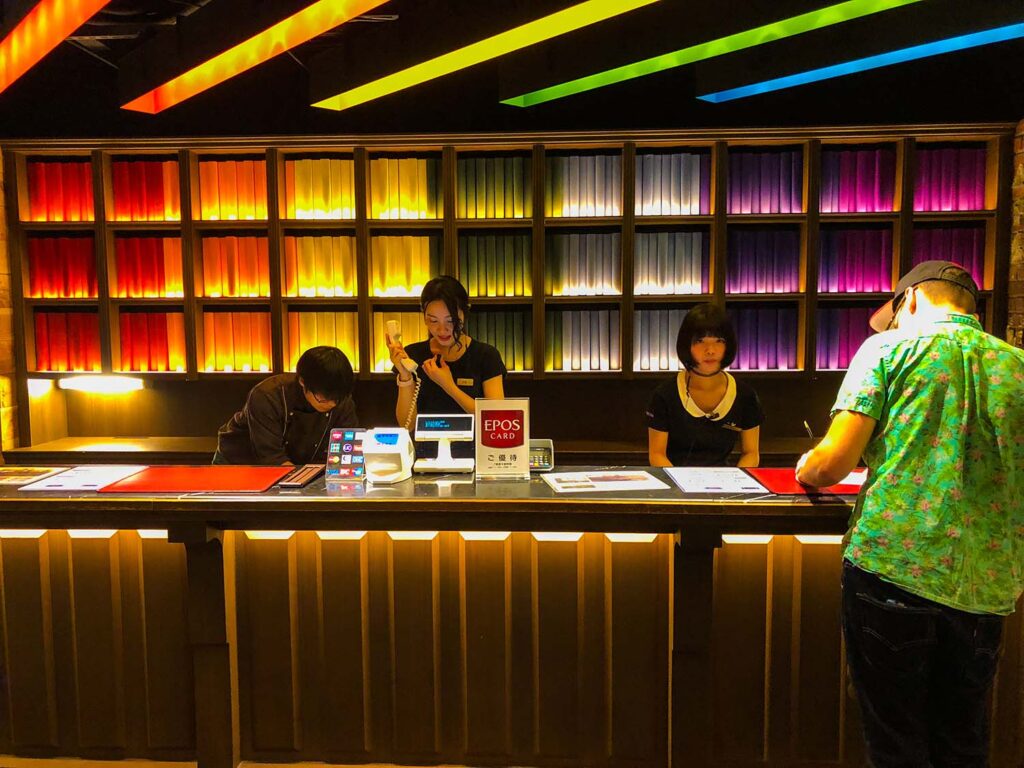
Each of the karaoke suites are designed to look like a fictionalized New York City. They all have their own unique touches and decorations. If you opt for the all-you-can-drink menu, there are so many options! The soda bar is massive and there is even a soft-serve ice cream included in your admission price. This really puts it over the top into amazingness! You can order extra food in your room if you are extra hungry. The song selection is amazing and all the tech inside the room is top-notch!
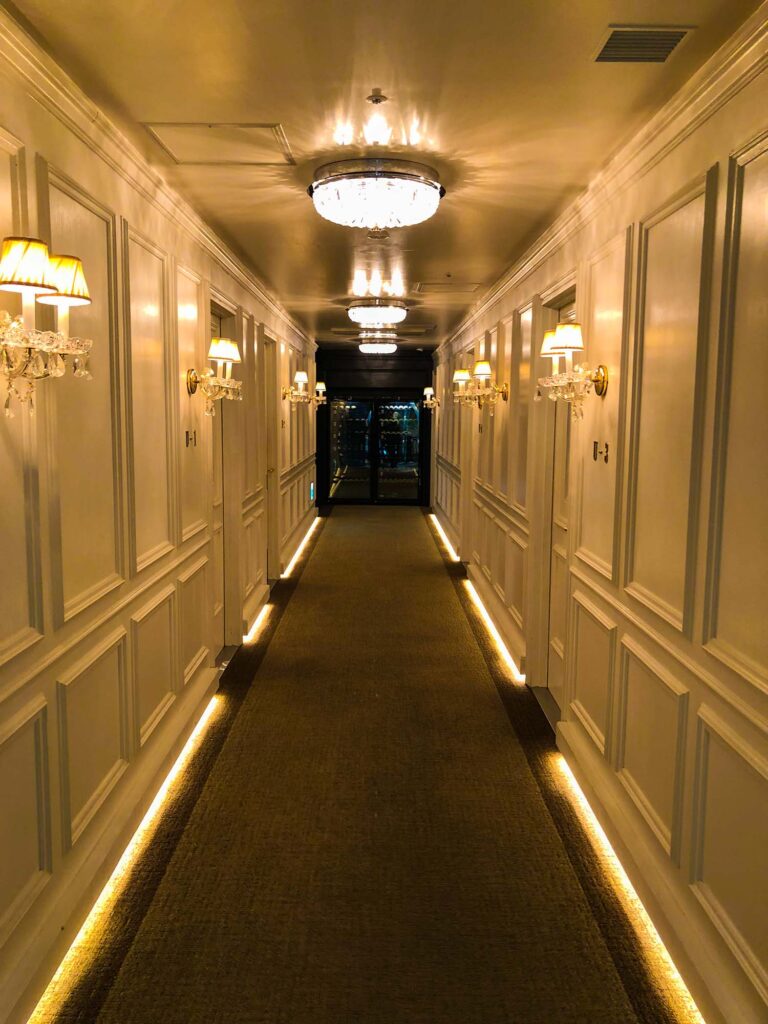

I hope you enjoyed this tour of Shibuya Crossing and the surrounding area. Come for the Crossing but stay for all the other wonderful things Shibuya has to offer! Let me know in the comment what your favourite part of Shibuya is or your fave place to watch the crossing.
Happy Travels, Adventurers!
<iframe src="https://www.google.com/maps/d/u/0/embed?mid=18cMmuUB5KkrM8hrw2ezZVZazjFtDpq5n" width="100%" height="480"></iframe>
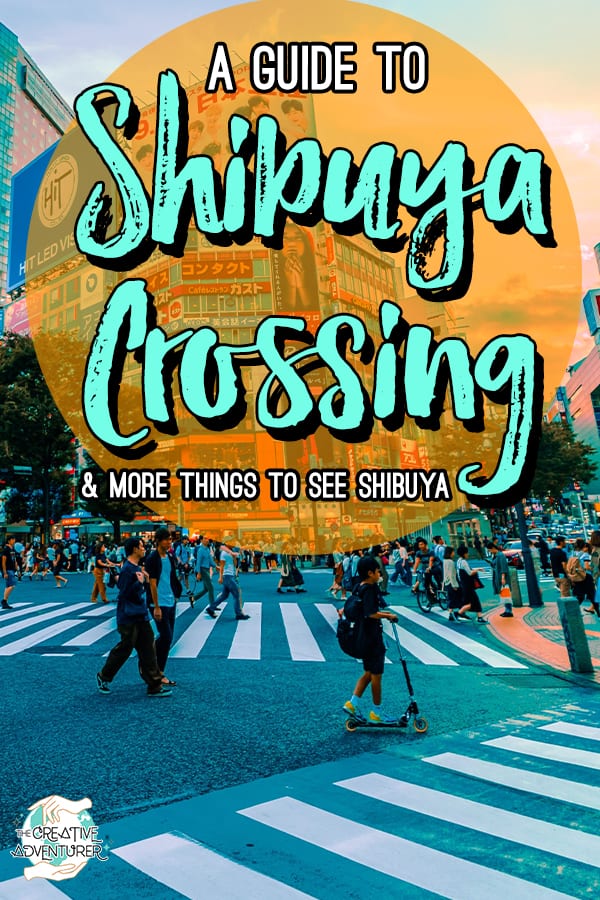
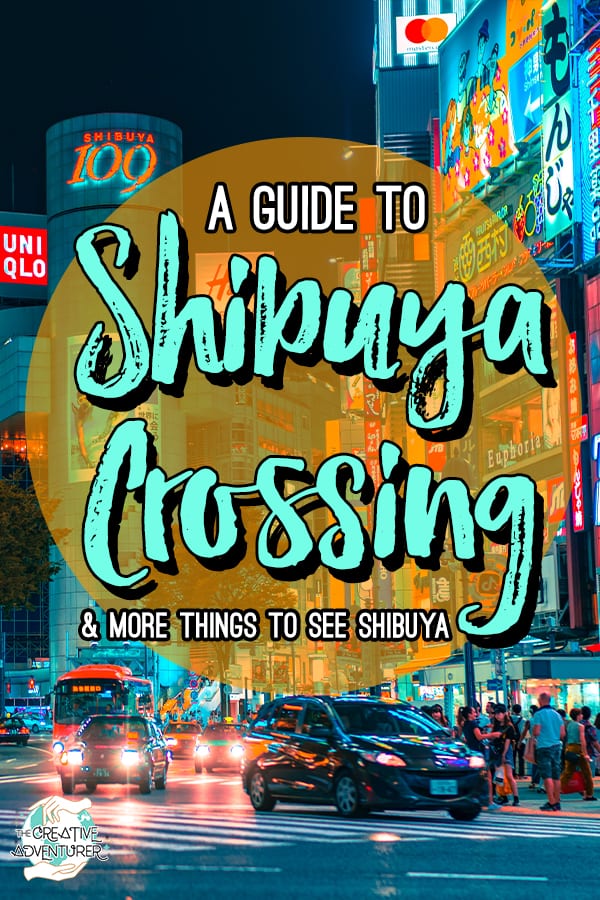

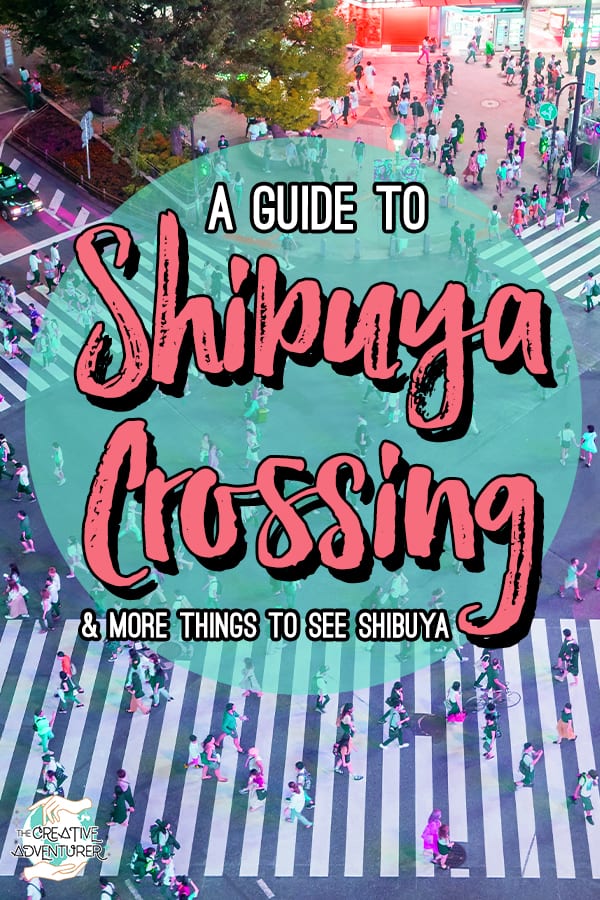


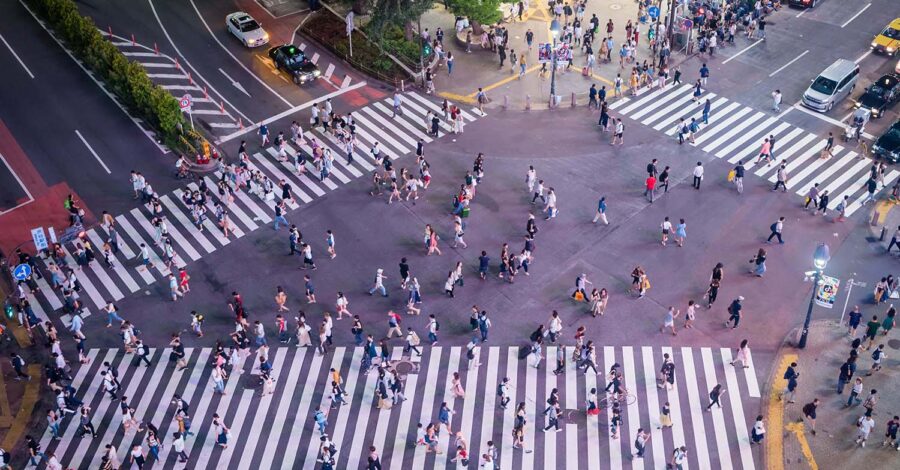


 (@_haruka1230)
(@_haruka1230) (@hugoobuchi_sightlog)
(@hugoobuchi_sightlog)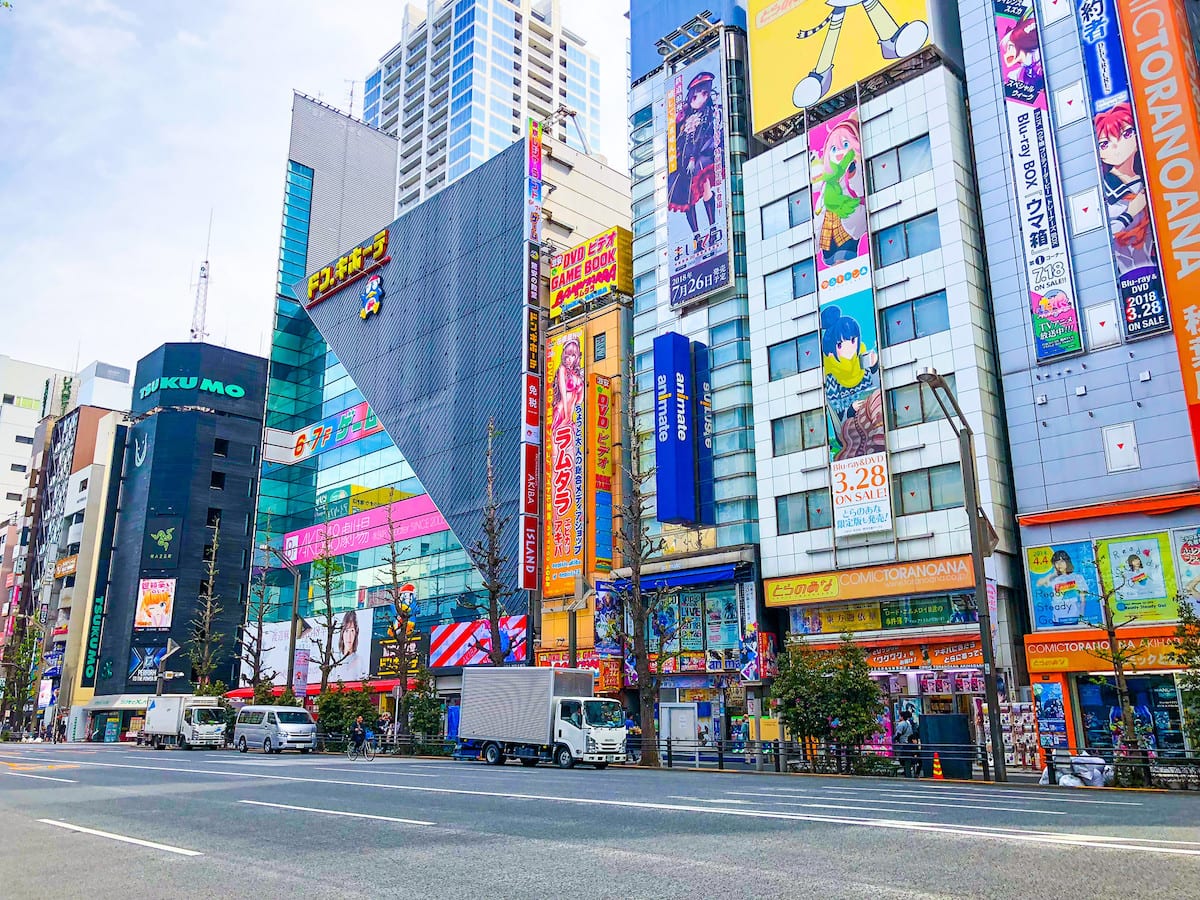
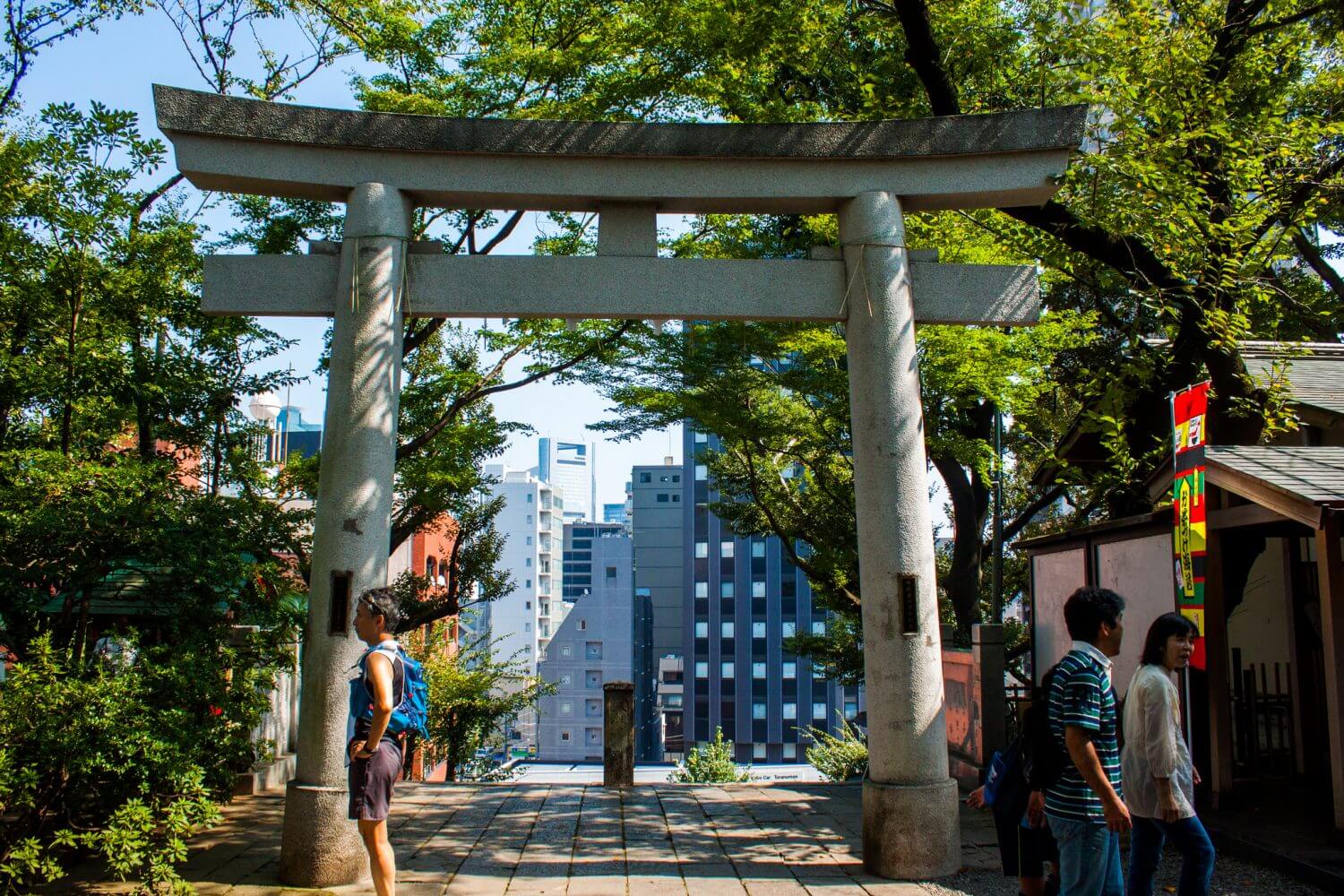
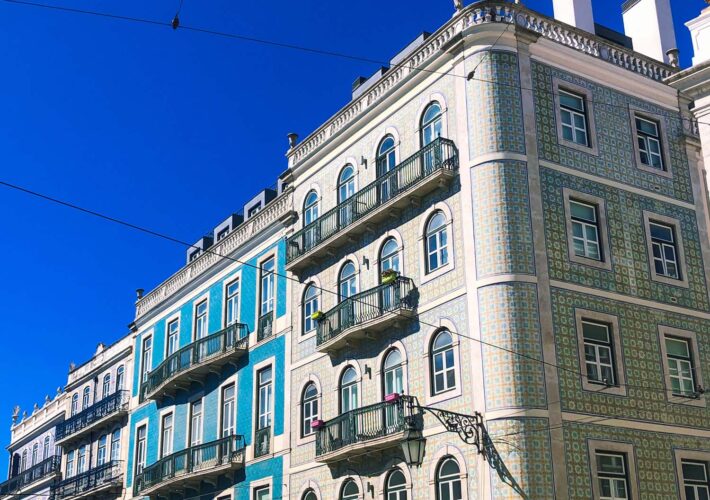

Leave a Comment